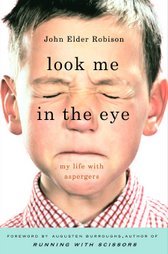The Function of Dialogue in Fiction
Dialogue is simply characters speaking aloud. It has many advantages:
1. Immediacy. Dialogue intensifies a scene by making it more immediate and lively. Generally, readers are more involved in the story if they experience the events and conversations rather than have someone tell them about them later.
2. Characterization. Dialogue is an excellent method of revealing character. When you hear the character's own words, it's easier to understand what kind of person he or she is. The way in which people speak reveals how interesting/ educated/funny/unhappy/etc. they are.
3. Information. It serves as a shorthand way of delivering information to the readers. Unloading background or character information in the middle of a story is called an info dump. Even if the information is crucial to understanding the character or for the plot of the story, it usually stops the momentum of the story. However, when such information is presented in dialogue, the momentum can be maintained. The conversation delivering the info is a misdirection, meaning you get the reader involved in the conversation and then slip the crucial info in without them noticing.
Writing Realistic Dialogue
There's a big difference between "realistic" and "real." In life, real is everything that happens to you during the entire day. A story takes the essence of that same day, but cuts out the boring parts. Same thing in dialogue. In real life, when most people speak they meander, repeat themselves, pause, digress, say "uh" and "um" a lot.
The writer tries to duplicate the rhythm of real speech, but cleans it up by cutting out the boring parts. Good dialogue isn't reality, it's "heightened reality."
General Rules of Dialogue Usage
There are some general rules about dialogue to keep in mind:
1. Start a new paragraph with each new speaker.
2. Don't put thoughts in quotes, it confuses the reader as to which lines are being spoken and which are being thought. Use underlining or italics to indicate a character's thoughts without attribution (Like that's really going to happen) or simply include a tag that indicates thought (Like that's really going to happen, he thought).
3. Terminal punctuation (commas, periods, question marks) goes inside the quotation marks.
4. Beginning writers sometimes wait until the end of a long speech to add the tag line. If you are going to use a tag line, do so as soon as stylistically possible. If you wait too long, the reader won't know who the speaker is until the end, and not knowing distracts the reader from what is being said.
5. Avoid using too many tags. This includes padding with a lot of description or gestures. Sometimes the dialogue must flow without interruption, with minimal tags. If only two characters are speaking, you can let several lines go without any tags.
6. Avoid adverbs in the tag lines (i.e., "Stop!" she shouted urgently.) The characters urgency is implied in the dialogue and by the fact that she shouted. The adverb distracts the reader.
7. Keep your tags simple. The longer and more elaborate the tag line, the more the actual dialogue becomes smothered.
8. Don't overuse names when characters address each other: "Hi, Jim, how are you?" "Fine, Sam." "Say, Jim, is that a new watch?" "No, Sam, same old one." This constant use of their names makes the dialogue stiff and robotic-sounding.
Quotation Marks
First, they are used to enclose words and phrases to which special attention needs to be drawn. If a word is used out of context or in some other unusual way, such as to include a slang word in formal writing, or when it is being used sarcastically, it should appear in quotes:
"Of" is an ambiguous preposition, for it can mean "from" or "by."
Yeah, it was a "happy" occasion, all right, if you like being humiliated in public!
He really is quite a "square" fellow.
In the first sentence we've used prepositions as nouns, which is allowable only if we put them in quotation marks. Sentence two involves sarcasm; that is, a meaning that is exactly opposite of what is said. You put "happy" in quotation marks because you want to be sure the reader catches the irony (in much the same way a speaker will make "air quotes" with his hands to make sure the audience understands the intended sarcasm). The final sentence uses quotes to insert a slang expression into a more formal context; omitting the quotes would make it seem that the writer was using informal language inappropriately.
A second use of quotation marks involves titles. Use them in the following instances:
-short artistic works (poems, songs, television and radio programs)
-titles of individual courses of study (but not areas)
-short stories
-articles in magazines
-any literary piece that is not bound as a book
Quotes and Dialogue
Quotation marks are used to indicate direct quotations and dialogue. Whenever you are putting the speaker's actual words on the page, use quotation marks; when you are merely telling your reader what someone said, don't use quotation marks.
Now here are three very important rules about punctuation with quotation marks:
1. Periods and commas always occur inside quotation marks:
2. Semicolons and colons always occur outside quotation marks:
3. Question and exclamation marks may occur inside or outside quotation marks, depending on the meaning of the sentence:
Varying the location of the attribution can also change the stress of the sentence. In a long quote or line of dialogue, using an interrupting attribution can remind the reader who is speaking, or serve to reinforce the main ideas of a quote by separating them and making each more distinct.
His manager said, "The trouble with John is his lack of education in the field."
"The trouble with John is his lack of education in the field," his manager said.
"The trouble with John," his manager said, "is his lack of education in the field."
The two main ideas in this sentence are "the trouble with John" and "his lack of education in the field." The third sentence is perhaps the most forceful because by breaking up the manager's statement, equal weight is given to both parts.
To prevent the reader from being confused about who is speaking, each change in speaker is indicated by a new paragraph because it makes it easy for the reader to keep track of who is speaking because of the way the dialogue is separated for each speaker.
The final rule involves quotations within quotations. For such internal quotations, use the apostrophe, sometimes called a single quote when used in this way:
"That's fine by me," Father cautioned, "but remember what Grandma used to say: 'Early to bed, early to rise. . .
I hope you all find this useful. Again, this is not my work but a massive cut and past of some of the most important parts of the lessons. In a day or 2 I'll post my assignment for this lesson.










10 comments:
1. Start a new paragraph with each new speaker.
If you are going to use a tag line, do so as soon as stylistically possible.
Thank you. These two are basic "Warning Will Robinson, a new writer approaching!" at the zine.
You are really nice for posting these writing lessons! Thank you!!!
I love writing dialogue! Talk, talk, talk, talk.... I wish I could sell a book that only has dialogue. I suck at scene description and flounder with characterization. But dialogue, I'm there!!
Did you see EE's writing exercise this past weekend? He gives really good comments on dialogue from people's WIPs.
May I suggest something else that dialogue in writing does . . . it makes your book more like a movie or play.
I suggest that the increased use of dialogue in novels followed the growth in the play and then movie industries in the part 200 years. Books before that did not have much dialogue.
And our society perceives plays (first) and now movies as more "real."
JER: Good points about dialogue and movies.
AW: Great writing advice. Dialogue is one of my bug-a-boos. And I see so many writers are ignoring quotes, or have two lines said by two people in the same paragraph. Lots of disregarding the rules, yet thy get published. Me? I try to stick to the rules.
interesting -- my wife (also a fiction writer) were having a discussion about dialog just yesterday.
the rules you list are good ones. even those who should know better, like my former fellow mfa students, have trouble with following basic grammar and punctuation with dialog.
one thing that i see with inexperienced writers in particular is overuse of adverbs, as you mentioned. also, i'm always suspicious of people sighing, breathing, grunting, etc. instead of just saying. the dialog itself should indicate tone, n'est-ce pas?
Soound advice and I love this desription ... Good dialogue isn't reality, it's "heightened reality."
Excellent post. Very useful information. As always, thanks for sharing. :-)
Actually, I am really appreciating your postings on this! It is a great refresher and in many cases new to me too!
thanks bunches!
I was reading along, feeling smug (I used to teach a lot of this stuff, you see) when I got to the part about quotation marks occurring OUTSIDE semicolons and colons. Eeek! I didn't know that! After the initial shock and horror, I ran a mental check of when I might have put a semicolon or colon INSIDE a quotation mark and I could not think of an occasion. Big sigh of relief...
I like the "heightened reality" quotation too, and this is a useful pointer, especially for an overwriter like me. Who feels like slogging through a whole thicket of ums, ahs, likes, and you knows...?
Useful reminders.
Post a Comment